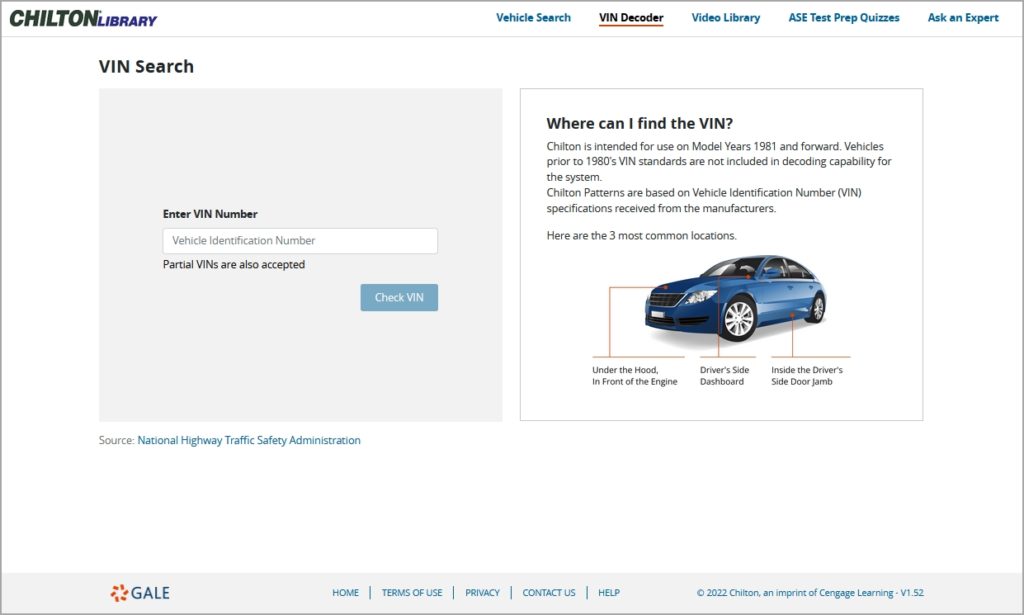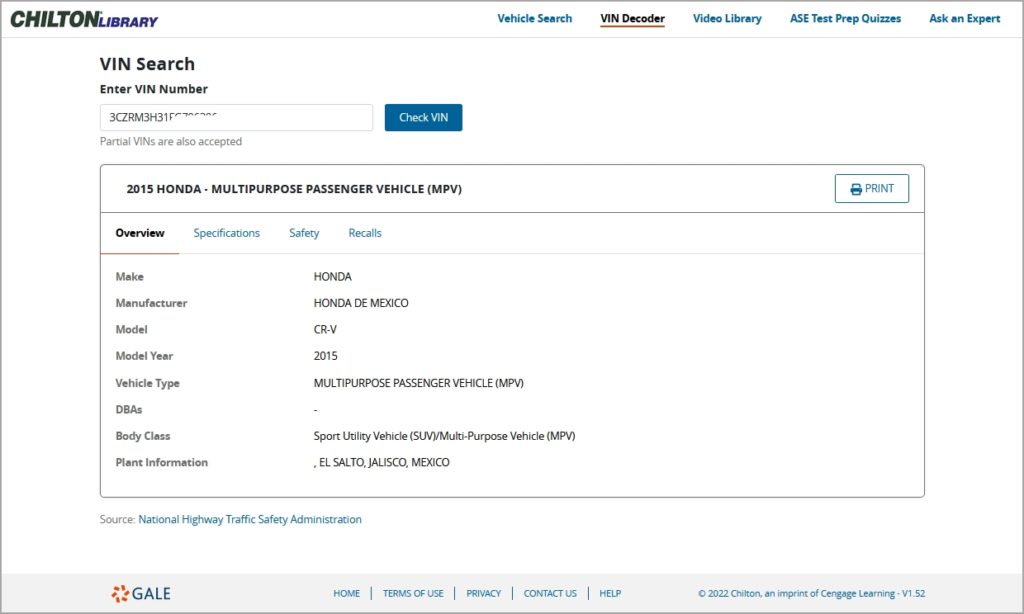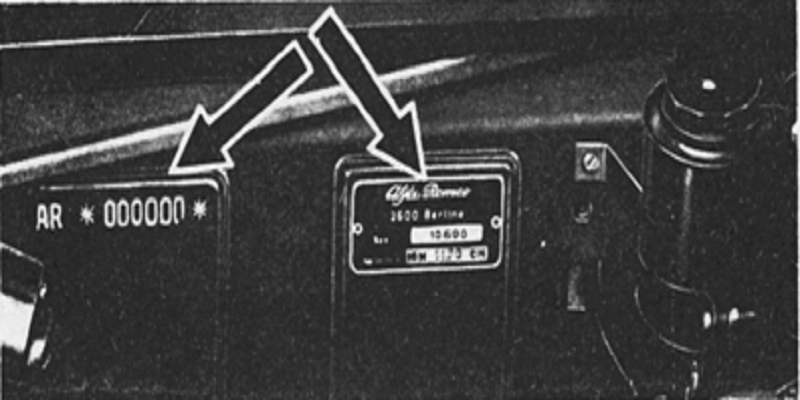|By Chilton Staff|
Beginning with the first automakers in the early 1900s, manufacturers sometimes scribed serial numbers or other identifiers on vehicles, engines, and transmissions. Half a century later in 1954, federal rules began requiring automakers to stamp a unique vehicle identification number, or VIN, on each car and truck, primarily as a way to discourage theft. Carmakers complied, but there was no standard. VINs were often 9 or 11 characters, but that varied widely, along with the location of the VIN plate on the vehicle. One result was that it was difficult for a police officer to quickly check a VIN. There was a safety issue, too, if the VIN location required an officer to turn their back on a potential thief in order to read the VIN.
To address issues like these, in 1981 the National Highway Traffic Safety Administration (NHTSA) implemented a standard VIN format composed of 17 numbers and letters. The 17-digit VIN sequence encodes information which uniquely identifies an individual car or truck. The types of information in the VIN include where the car or truck was manufactured, what type of engine or transmission it was originally equipped with, body styles and/or sub-model information, and its safety restraints (such as airbags). There is also a serial number.
Just as a Social Security number is unique to each individual, the VIN is unique to each vehicle, so the number appears on its title and registration records. The auto insurance company also uses it, as does the auto manufacturer in tracking recalls performed and warranty claims.
VINs also provide some protection from vehicle theft and fraud. When a vehicle is stolen or has a salvage title, that information is assigned to the VIN, assisting buyers and sellers. (Such information is available from government and private sources.)
Decoding a VIN reveals some of the vehicle’s original factory equipment. That’s handy information when determining which component-specific repair procedure applies. And when replacing parts, the VIN helps select exactly the right part.
Lately, there’s been another reason for some people to decode VINs. Since the passage of the Inflation Reduction Act of 2022, people look to the VIN to determine an electric vehicle’s country of final assembly. The act provides incentives for those purchasing an electric vehicle if certain requirements are met. One requirement is that the build location for the vehicle is in the U.S. as a way to encourage more domestic manufacturing.
ChiltonLibrary makes VIN decoding easy. Not only does the VIN Decoder tool break down the VIN, it also lists safety recalls for the specific vehicle. To get started:
1. From the top navigation, select the VIN decoder tab, enter the 17-digit VIN, and tap “Check VIN.”

2. The tool returns data provided by the manufacturer to NHTSA. “Overview,” the first tab, details the year, make, model, manufacturer, vehicle type and body style, and manufacturing plant.

3. The second tab, “Specifications,” displays the engine model, number of cylinders, horsepower, displacement, type of fuel, and other data provided by the automaker.

4. The third tab, “Safety,” contains information about the airbags and seat belts. The fourth tab, “Recalls,” is a top-level look at NHTSA’s current safety recalls which specifically apply to that VIN. The extract provides the recall report date and campaign number, as well as the recall summary, safety risk, components involved, and the remedy, such as repairing at no charge. For the complete recall bulletin, refer to ChiltonLibrary’s “Recalls/Bulletins” section.

We invite you to cruise ChiltonLibrary’s new platform, enhanced experience, and new features, including its VIN decoder with NHTSA safety recalls. Not a subscriber? Request a trial or contact your Gale representative.


